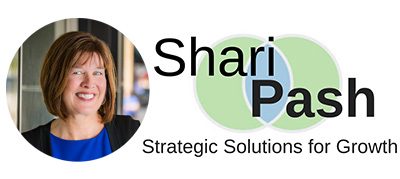I have found through my years of facilitating board goals sessions, the life of chambers, associations, and non-profits, success isn’t just a matter of chance; it’s the result of careful planning, strategic thinking, and intentional execution. One of the most powerful tools at the disposal of any organization is a well-defined strategic plan. The plan I feel brings the best success and outcomes is a goals plan that serves as a roadmap, guiding the organization toward its objectives and growth, collaboration, and achievement. In this article, we’ll explore the key role that a goals plan plays for my clients and in the success of your chamber or organization and look into the benefits it brings to the table.
Setting the Course:
- Clarity in Vision: A chamber or organization’s goals plan acts as a guide that points the way toward a clear and shared vision. By outlining specific areas of focus a goals plan ensures that everyone is on the same page, working collectively towards a common purpose. It keeps the board and organization focusing on what matters.
- Prioritization: Without a goals plan, a chamber or organization might find itself distracted by countless tasks and projects, often leading to confusion and inefficiency. A well-structured goals plan helps prioritize tasks, focusing efforts on what truly matters and avoiding distractions that can hinder progress.
- Measurable Progress: And it’s important to remember from what we learned years ago, goals in a goals plan should be SMART Specific, Measurable, Achievable, Relevant, and Time-bound. This ensures that progress can be tracked effectively, allowing the chamber or association to celebrate achievements, identify challenges, and make necessary adjustments along the way.
Driving Success:
- Motivation and Engagement: An intentional goals plan provides your board, staff, and members with a clear sense of purpose and direction. This clarity serves as a powerful motivator, inspiring members to invest their time, energy, and skills in pursuit of the chamber or association’s objectives. As members see their efforts contribute to tangible outcomes, their engagement and commitment naturally increase.
- Resource Allocation: Resources, including time, money, and manpower, are often limited. A goals plan aids in the efficient allocation of these resources by directing them towards initiatives that align with the chamber or association’s overarching goals. This promotes a more strategic use of resources.
- Adaptation and Growth: An intentional goals plan allows a chamber or organization to adapt to changing circumstances and seize opportunities as they discover value that is essential to members. As the community or industry landscape evolves, the organization can adjust its goals to stay relevant, essential, and forward-thinking. This flexibility fosters sustainability and long-term growth.
Conclusion:
In the world of chambers, associations, and non-profits, a goals plan isn’t just a document; it’s an interactive tool that drives success, empowers members, and propels growth. With a well-structured goals plan in place, organizations can overcome challenges, make informed decisions, and celebrate achievements that bring them closer to their desired outcomes. By harnessing the power of a goals plan, chambers and organizations lay the foundation for a brighter and more prosperous future. So, where do you start to set the course, drive success, and enhance communication through a strategic goals plan? Let’s connect and talk more about your customized roadmap to success.
Shari Pash is the founder of Strategic Solutions for Growth, a training company headquartered in Grand Rapids, MI. Shari works with Chambers of Commerce, non-profit organizations, and associations across the U.S. and Canada. Connect with Shari to learn more about how she can help your organization.





